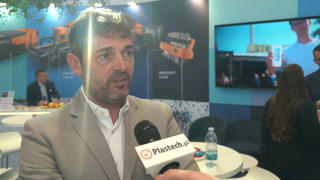The new hope is (was) chemical recycling, which exists as a technology, but is two orders of magnitude behind the needs of the near future and we know very little about its carbon footprint. It is important to note that the most common method of pyrolysis is also a thermal reaction, where the starting material is broken down into simpler molecules at high temperatures without the presence of oxygen. Currently, there is less than 400 kilotonnes/year of chemical recycling capacity in Europe, of which less than 300 kilotonnes/year produces pyrolysis oil. Current needs are only orders of magnitude higher for the plastics industry.
Plastics Europe members have pledged to create 2.8 million tonnes of new chemical recycling capacity by 2030, 80 per cent of which will be in gasification and pyrolysis plants. However, there are many regulatory uncertainties around chemical recycling. Chemical recycling is still a source of debate. Environmentalists and researchers have long debated the feasibility and justification of chemical recycling, with many citing the release of pollutants and toxic substances when plastics are heated or boiled, which are seriously harmful to the environment. But the counter-argument is that chemical recycling does not actually mean real carbon dioxide savings compared to virgin polymer production. One of the main objections of environmentalists is that the mass of oil produced during pyrolysis is barely half the amount of waste fed in, although in the case of very clean, sorted and homogeneous waste, the yield can reach up to 80 percent. They also mention as a problem that pyrolysis oil alone cannot be used, but must be mixed with "virgin naphtha" before processing.
Overall, the production cost of repolymers produced by chemical recycling can be up to twice that of conventional virgin polymers. And industry estimates that the price of repolymers produced in this way can be up to 2.5-3 times the price of conventional polymers. The big chemical companies are definitely looking to enter the recycling market, with the deadline for the application of the 2030 mandatory recycling rate targets approaching, demand is sure to increase and most converters need a solution that is easy to process, similar to virgin polymer. However, the industry in Europe is also characterised by a series of bankruptcies in this segment.
The key seems to be good quality, homogeneous waste for both mechanical and chemical recycling. But this is in short supply and expensive. This, combined with high energy prices, makes plastic recycling unprofitable. Bankruptcies are no coincidence, even those that remain afloat are operating at reduced capacity.

The business case is that we have tasted the "pudding" of recycling and it does not taste good. It is inedible in this form, and the laws of natural science do not allow the regulatory goals to be met.
What is the solution? Regulation is the answer to the problems caused by regulation. Probably the Mass Balance Approach, originally invented for chemical recycling: (MBA) will be the one that solves the problem and makes it manageable with simple accounting tools. The method is to take the renewable or recycled resource that flows into the technology on the input side and then attribute it to the final product on the output side, regardless of whether the final product physically contains that "green" or "recycled" molecule. This method has so far only been the expectation of chemical recyclers.
However, it seems that it would also be appropriate to apply it to mechanically recycled materials. That is, a plastic finished product or packaging material manufacturer can account for recycled content at the product portfolio level. To illustrate with an example: a manufacturer produces 100 tonnes of food packaging film, made from virgin polymer. In parallel, it produces 30 tonnes of less quality-sensitive products from recycled plastic. After all, there are many products that can be made from recycled plastic.
The main principle should be to recycle what you can and use it for what you can. Let's not rape the natural sciences and economics. Implementing rules for the amended and revised "The Packaging and Packaging Waste Directive (PPWD - Directive 94/62/EC)" are still being drafted, so we are on time. Another important principle should be that plastic recycling should also work on a business basis. This requires real, continuous demand and availability of waste. This ensures that the price of regranulates can be decoupled from that of "virgin" polymers, providing real profitability for recyclers.
This work is being supported by a Central European working group, coordinated by the Hungarian Plastics Industry Association, in the framework of an international voluntary project, which is compiling a list of products that can and should be manufactured with a mandatory significant recyclate content of more than 50 percent. There are no surprises, the industry has already taken advantage of these opportunities, albeit so far for the sake of "cheapening". But improving the quality and quantity of waste is also an important task. There are outstanding European examples that are worth following and making standard.
This work will be completed this summer and will be presented at the Central European Plastics Meeting in the form of a declaration.
Author: László Bűdy, Managing Director in myCeppi



